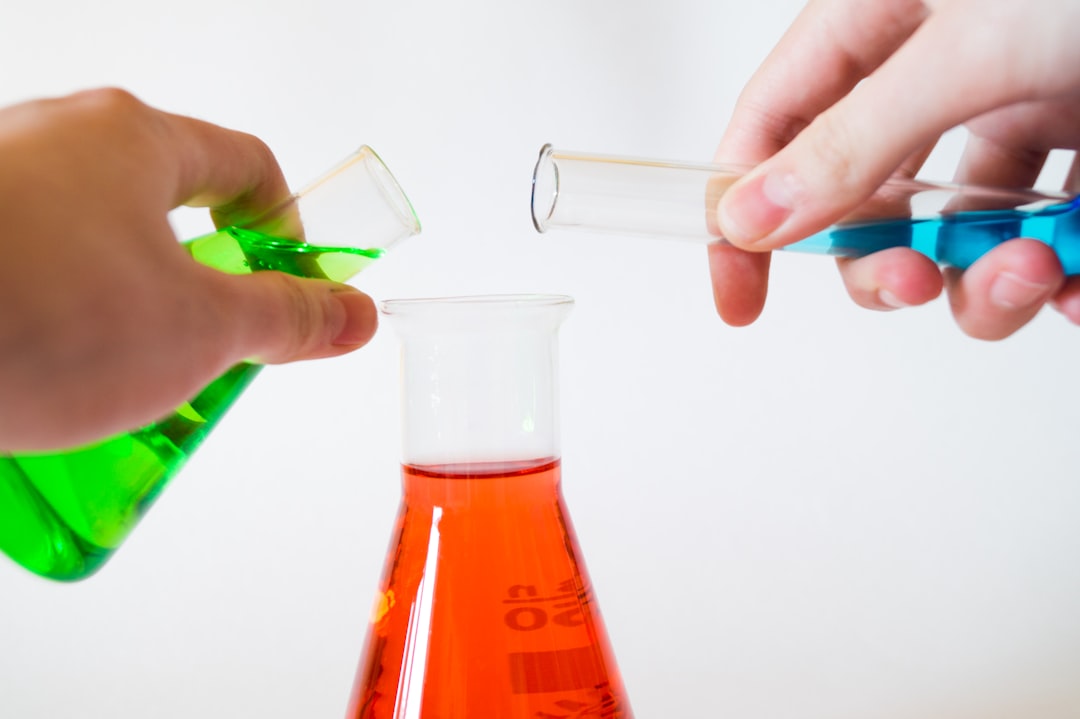What is it about?
In this paper, researchers from the University of Turku are describing a new method to employ tiny green microalgae to make useful chemicals with sunlight. Specifically, the researchers have inserted a special enzyme called CHMO into these microalgae. This enzyme helps convert cyclohexanone into another chemical called ε-caprolactone. ε-caprolactone is a versatile chemical that can be used to make a variety of products, including plastics, cosmetics, and food additives. The cool part is that these microalgae use sunlight to produce the oxygen and energy needed for this conversion. Green algae can also make hydrogen gas (H2) when exposed to light. So, the researchers figured out a way to make both hydrogen gas and ε-caprolactone in one go. The process starts with the microalgae making hydrogen gas, but it slows down as more oxygen builds up due to photosynthesis. At the same time, the CHMO enzyme is transforming cyclohexanone into ε-caprolactone. Overall, this study demonstrates that photosynthetic whole-cell biocatalysts can be used to produce chemicals and fuels directly from sunlight. This is a promising new approach to sustainably making chemicals and fuels.
Featured Image

Photo by Markus Spiske on Unsplash
Why is it important?
The research is important for several reasons: 1. Renewable Energy: The method harnesses the power of sunlight to produce hydrogen gas, which is a clean and renewable energy source. Hydrogen has the potential to be a sustainable fuel for various applications, including transportation and energy storage. 2. Green Chemical Production: The conversion of cyclohexanone into ε-caprolactone using this method represents a sustainable way to produce valuable chemicals. ε-caprolactone is a precursor for the production of biodegradable polymers, making it valuable for environmentally friendly materials. 3. Carbon Neutrality: By using photosynthesis as a driving force, this research offers a potentially carbon-neutral method for chemical production. It reduces the reliance on fossil fuels and mitigates greenhouse gas emissions associated with traditional chemical synthesis. 4. Biotechnology Advancements: The genetic engineering of microalgae to serve as biocatalysts opens up new possibilities in biotechnology. It showcases the potential of microorganisms to perform complex chemical transformations efficiently. 5. Reducing Environmental Impact: This approach reduces waste and increases the overall efficiency of chemical production, which is crucial for minimizing the environmental impact of industrial processes. 6. Energy and Resource Efficiency: The research seeks optimal conditions for chemical production, such as low-intensity light and the addition of specific compounds like acetate and ethanol. This focus on efficiency can lead to resource savings and reduced energy consumption in chemical manufacturing. 7. Future Sustainability: As society moves towards more sustainable and environmentally friendly practices, research like this offers innovative solutions that align with global sustainability goals. In summary, this research is important because it leverages the capabilities of green algae and biotechnology to produce clean energy (hydrogen) and valuable chemicals while reducing the environmental footprint of these processes. It exemplifies the potential for nature-inspired solutions to address pressing energy and environmental challenges.
Perspectives
This research is still in its early stages, but it has the potential to be scaled up. One challenge that needs to be addressed is the cost of producing chemicals and fuels using photosynthetic whole-cell biocatalysts. Currently, this process is more expensive than producing chemicals and fuels from fossil fuels. However, the cost of this process is expected to come down as the technology improves.
Dr Sergey N Kosourov
Turun Yliopisto
Read the Original
This page is a summary of: Engineered green alga Chlamydomonas reinhardtii as a whole-cell photosynthetic biocatalyst for stepwise photoproduction of H2 and ε-caprolactone, Green Chemistry, January 2023, Royal Society of Chemistry,
DOI: 10.1039/d3gc01400b.
You can read the full text:
Resources
Contributors
The following have contributed to this page










